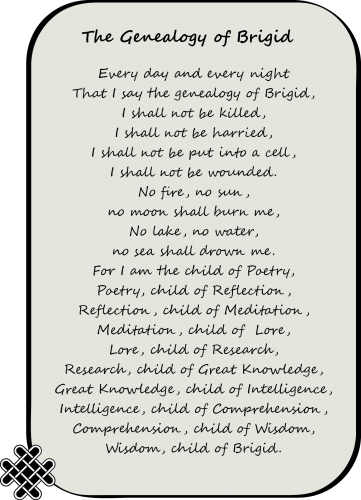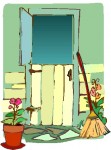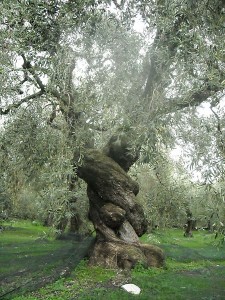Most of my goddess pictures and statues are on my altar, logically enough, or in the same room as my altar, where I also do ritual or yoga. My picture of Brigid, however, is in my office. I think of Brigid as the quintessential work goddess. Homage to her is through keeping a clean house, providing for the material maintenance of the household, improving relationships within the house, creative work, and the appreciation of creative work. You might characterize her worship as purpose-driven, but I think of her as the spirit imbued within the process of living well.
It’s typical to post about Brigid on her holiest day, Imbolc (February 1-2), but she’s on my mind today. I’ve been reading about her in an old copy of SageWoman from 1991, in a spirit of nostalgia. I felt a longing to return to a time before the Orwellian hellscape emerged that compels us to play along with the transing of kids (or equally absurd abuses) to keep our jobs. Times have changed, even at SageWoman, which now subscribes to the gender ideology. It pays.
The theme of this 1991 issue was “Work.” Many women wrote thoughtful essays about the morality and spirituality of work. An article about Brigid by Callista Lee had what she claims is a “traditional prayer” called The Genealogy of Brigid. I checked it out on the internet (okay, there are some good things, or things that are good sometimes, about the 21st century). It does seem to be a well known prayer. If you are being harried, to use an old-fashioned term, for not bowing before the trendy gender edict, perhaps this prayer will help.




